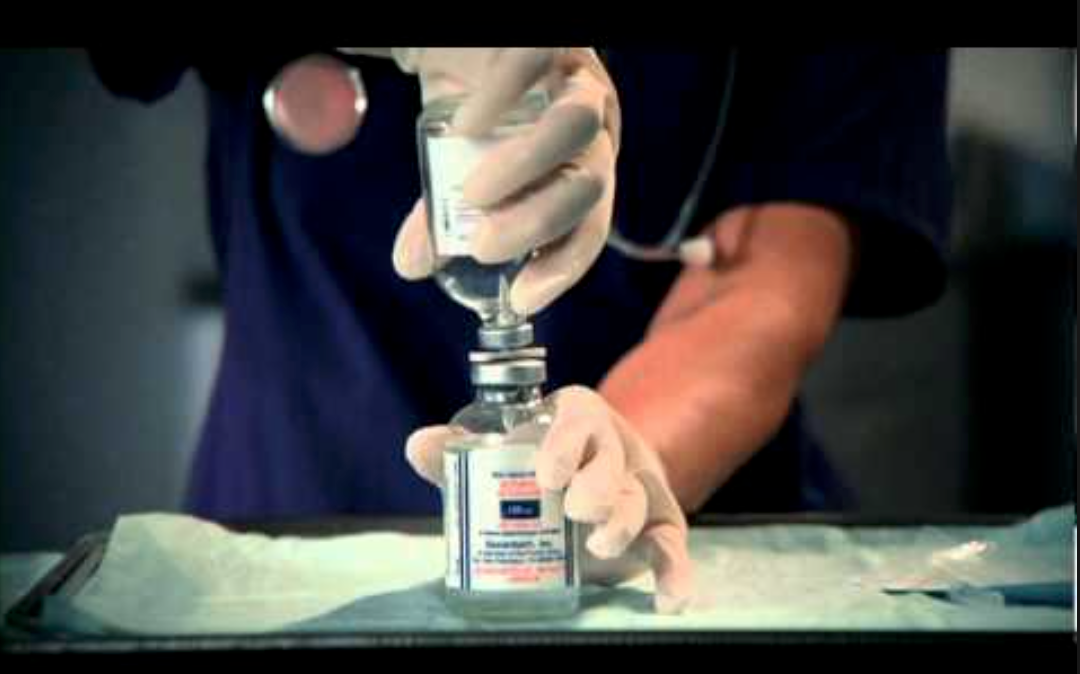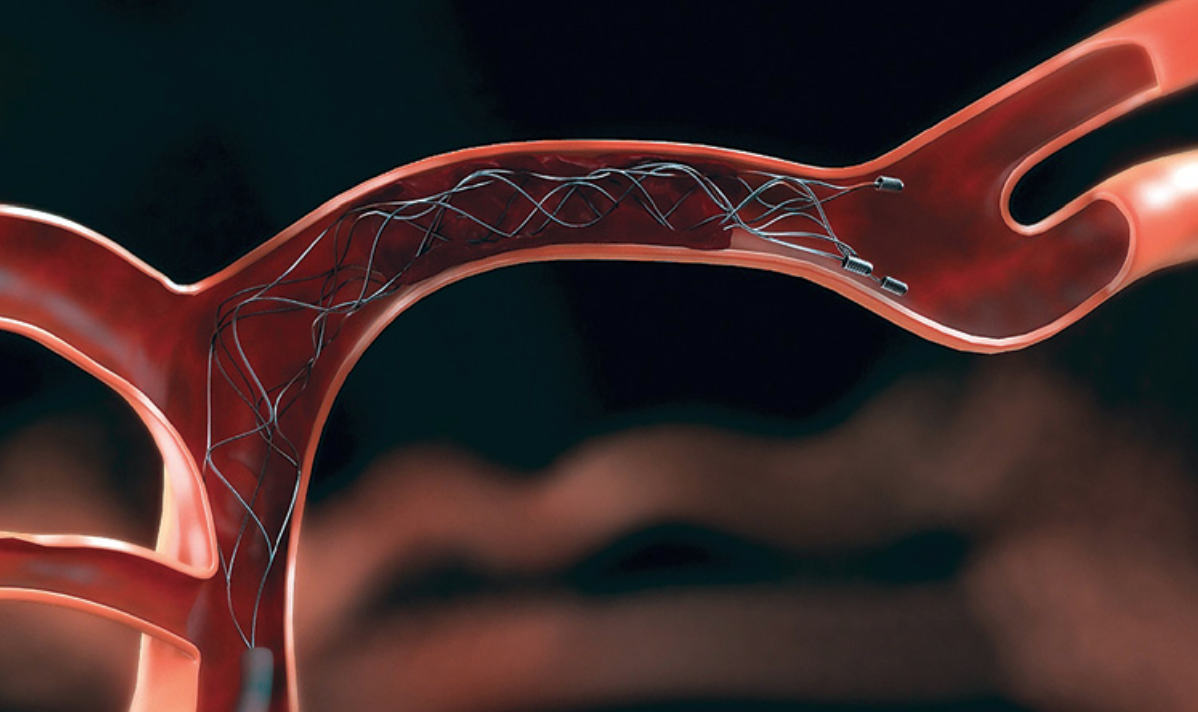Author: Brit Long, MD (@long_brit, EM Attending Physician, San Antonio, TX) // Edited by: Alex Koyfman, MD (@EMHighAK, EM Attending Physician, UTSW / Parkland Memorial Hospital)
The American Heart Association/American Stroke Association recently released the 2018 updates for early management of patients with acute ischemic stroke. This post will provide you with several of the key updates for emergency clinicians. As you probably realize, a great deal of recent literature has changed the landscape of stroke care.
Of note, this post provides a summary for ED-relevant care. Several sections of the guidelines are not discussed. Keep in mind these guidelines only refer to acute ischemic stroke, not hemorrhagic stroke.
Prehospital Stroke Care

- Use of a stroke assessment tool by first aid providers is recommended.
- EMS personnel should provide prehospital notification to the receiving hospital for suspected stroke so appropriate hospital resources are mobilized prior to arrival.
- Patients with a positive stroke screen or strong suspicion of stroke should be transferred to the nearest facility able to provide tPA.
- If several IV tPA capable facilities are present within a definitive area, bypassing the closest to bring the patient to a facility that offers higher level of stroke care (mechanical thrombectomy) is uncertain.
- For patients with suspected large vessel occlusion stroke, the Mission: Lifeline Severity–based Stroke Triage Algorithm for EMS recommends transport to a comprehensive stroke center if travel time is < 15 additional minutes compared to the closest primary stroke center. However, there is insufficient evidence to recommend one grading scale for assessment of large vessel occlusion over another or a specific threshold additional travel time for bypass of a primary stroke center. It is reasonable to transfer to a comprehensive center with endovascular capabilities if additional travel time is < 15 minutes.
Hospital Stroke Team

- An organized protocol for emergency evaluation of suspected stroke is recommended.
- A door to needle time < 60 minutes in > 50% of stroke patients treated with tPA is recommended. It may be reasonable to establish a second time goal of < 45 minutes for > 50% of patients receiving tPA.
Telemedicine

- Teleradiology systems approved by the FDA are recommended for “timely” review of brain imaging in suspected stroke. This is useful in the timely administration of IV tPA.
- Due to limited distribution/availability of neurological, neurosurgical, and radiological consultation, telemedicine can be beneficial to ensure 24/7 coverage and care.
- Discussion by phone with a neurologist is helpful if telemedicine is not otherwise available.
ED Evaluation and Management

- Use of a stroke severity scale (preferably NIHSS) is recommended.
- All patients admitted with suspected acute stroke should receive imaging including noncontrast head CT. Although diffusion weighted MRI is more sensitive, routine use in all patients is not recommended as it is not cost effective. If CT is negative and the presentation is unclear, an area of restricted diffusion on MRI may lead to management change.
- Imaging should occur within 20 minutes of ED arrival in > 50% of patients who are candidates for tPA and/or mechanical thrombectomy.
- There is insufficient evidence to identify a specific amount of acute CT hypoattenuation severity/extent that affects response to tPA. Extent and severity of acute hypoattenuation or early ischemia should not be used to withhold therapy.
- The hyperdense MCA sign or loss of gray-white differentiation on CT should not be used to withhold tPA.
- Routine MRI for exclusion of cerebral microbleeds before tPA is not recommended.
- Using imaging criteria to select patients who woke with stroke symptoms or have unclear time of symptom onset for treatment with tPA is not recommended.
- Multimodal CT and MRI (with perfusion imaging) should not delay tPA administration.
- For patients meeting criteria for endovascular therapy, noninvasive intracranial vascular imaging is recommended during initial imaging, but this should not delay tPA. Patients who qualify for tPA before vascular imaging should receive tPA before vascular imaging.
- For patients who meet criteria for endovascular treatment, CTA is reasonable before obtaining creatinine if there is no history of renal disease and a large vessel occlusion is suspected.
- Imaging of the extracranial carotid and vertebral vasculature is reasonable in patients who are candidates for mechanical thrombectomy (evaluate for stenosis, dissection, occlusion).
- Additional imaging other than CT and CTA or MRI with MRA such as perfusion studies to select patients for mechanical thrombectomy in < 6 hours is not recommended.
- In patients with stroke symptoms within 6-24 hours after last normal with large vessel occlusion in the anterior circulation, CT perfusion, MRI perfusion, DW-MRI is recommended to assist in selecting patients for mechanical thrombectomy (DAWN, DEFUSE 3 trials).
Other tests
- The only serum test required before tPA is blood glucose assessment.
- Baseline ECG or troponin is recommended in patients with acute stroke, but these should not delay administration of tPA.
- Chest X-ray in patients presenting with stroke and no history of pulmonary or cardiac disease is unclear. If one is obtained, it should not delay tPA.
General Management (oxygen and blood pressure)
- Provide supplemental oxygen to maintain oxygen saturation > 94%. Supplemental oxygen is otherwise not recommended. Hyperbaric oxygen is not recommended for acute stroke unless the stroke is caused by air embolization.
- Hypotension and hypovolemia should be treated to ensure systemic perfusion.
- A blood pressure goal of < 185/110 mm Hg is recommended in patients eligible for tPA.
- In patients for which intraarterial therapy is planned, a BP goal < 185/110 is reasonable before the procedure.
- Hypothermia for treatment in acute stroke is not well established.
- If hyperthermia (>38°C) is present, a careful evaluation for the source is recommended. The source should be treated, and antipyretics are recommended.
- Hyperglycemia is associated with worse outcomes. Maintaining serum glucose 140-180 mg/dL is reasonable.
- Hypoglycemia (< 60 mg/dL) should be treated.
Alteplase/tPA

- tPA in doses of 0.9 mg/kg, max dose 90 mg over 60 minutes with an initial 10% bolus over 1 minute is recommended for patients presenting < 3 hours from symptoms onset.
- tPA for patients presenting within 3-4.5 hours is recommended for select patients. It may be reasonable in other patients presenting within the same time window for mild strokes. Risks and benefits should be carefully weighed.
- In potentially eligible patients who present with prior microbleeds on MRI that are small in number (1-10), tPA is reasonable. Greater than 10 microbleeds on prior imaging is associated with increased bleeding with tPA. Benefits of treatment are uncertain.
- Patients with sickle cell disease and stroke may receive benefit from tPA.
- tPA is not recommended if the patient has received low-molecular-weight-heparin within the last 24 hours.
- Potential risks and benefits of tPA administration is recommended.
- Administering tPA is reasonable before coagulation panel or platelet count returns if there is no anticipated abnormality on testing.
- Physicians should be ready to treat complications including bleeding and angioedema from tPA.
- After tPA is given, BP should be maintained < 180/105 mm Hg for at least the first 24 hours.
- Use of antithrombotic therapy in the first 24 hours after tPA may be appropriate in the setting of concomitant conditions requiring treatment if tPA was not provided. However, the risk is uncertain.
Other agents
- Tenecteplase 0.4 mg/kg single bolus IV is a reasonable alternative to tPA in patients with minor impairment and no major intracranial occlusion. It has not been shown to be superior or noninferior to tPA in acute stroke.
Mechanical Thrombectomy

- Patients eligible for tPA should receive it, even if endovascular therapy is considered.
- If patients meet specific criteria (prestroke mRS 0-1, occlusion of internal carotid or MCA segment 1, age > 18 yrs, NIHSS > 6, ASPECTS > 6, and treatment within 6 hours is possible), mechanical thrombectomy with a stent retriever is recommended.
- Stent retrievers may be reasonable in select patients within 6 hours of onset with MCA segment 2 or 3 occlusion, anterior cerebral arteries, vertebral arteries, basilar artery, or posterior cerebral arteries, although benefits are uncertain.
- Mechanical thrombectomy is recommended in select patients (who meet DAWN or DEFUSE 3 eligibility criteria) with acute stroke within 6-16 hours of last normal and large vessel occlusion.
- Mechanical thrombectomy is reasonable within 16-24 hours with large vessel occlusion in patients who meet other DAWN criteria.
- Reduced time from symptom onset to reperfusion with endovascular therapy is associated with improved clinical outcomes.
- Stent retrievers are preferable to the MERCI device. Stent retrievers are the first choice for mechanical thrombectomy, but other devices may be reasonable in some circumstances.
- Salvage therapy with intra-arterial thrombolysis may be reasonable.
- A BP goal of < 180/105 mm Hg is recommended during the procedure and for 24 hours after.
Antiplatelet medications
- Aspirin is usually recommended in patients with stroke within 24-48 hours after onset. If treated with tPA, aspirin is generally delayed for 24 hours. Aspirin may be given in the setting of concomitant conditions that may benefit from antiplatelet therapy.
- Aspirin is not a substitute for tPA if patients are otherwise eligible for tPA.
- Glycoprotein IIb/IIIa receptor antagonists are not recommended, as they are potentially harmful.
- Dual platelet therapy with aspirin and clopidogrel for 21 days may be beneficial for secondary stroke prevention in patients with minor stroke.
- Ticagrelor is not recommended for acute treatment. It may be reasonable in patients with contraindications to aspirin.
Anticoagulants
- Anticoagulation for patients with severe internal carotid artery stenosis or nonocclusive, extracranial intraluminal thrombus is not well established.
- Argatroban, dabigatran, and other thrombin inhibitors are not well established for acute stroke care.
- Factor Xa inhibitors are not well established for acute stroke care.
Cerebral/cerebellar edema

- Surgical decompression with ventriculostomy or craniectomy may be needed for clinical deterioration from infarction resulting in edema.
- Osmotic therapy in patients with clinical deterioration is reasonable.
- Brief moderate hyperventilation (PCO2 30-34 mm Hg) is reasonable with severe neurological decline from cerebral edema.
- Hypothermia or barbiturates for edema are not recommended.
- Corticosteroids are not recommended for treatment of cerebral edema.
Seizures
- Seizures after stroke should be treated. However, prophylactic anti-seizure medications are not recommended.
Miscellaneous
- Routine use of prophylactic antibiotics is not recommended.
- Routine bladder catheter placement is not recommended due to increased risk of catheter-associated UTI.
Further Reading
See Journal Feed’s amazing summary here: https://journalfeed.org/article-a-day/2018/new-2018-aha-stroke-guidelines
2018 Guidelines for the Early Management of Patients with Acute Ischemic Stroke: A Guideline for Healthcare Professionals From the American Heart Association/American Stroke Association. Stroke. 2018 Jan 24. pii: STR.0000000000000158. doi: 10.1161/STR.0000000000000158. [Epub ahead of print]








7 thoughts on “2018 AHA/ASA Ischemic Stroke Updates”
Note that the above guideline still states “Tenecteplase … has not been shown to be superior or noninferior to tPA in acute stroke.”
Unlike DEFUSE-3, to which committee members got embargoed access to the data for consideration, and ultimately, last minute incorporation into the 2018 guidelines, results of EXTEND IA TNK came out too late for evaluation and incorporation into the 2018 guidelines. Worth a read, and bets on whether tnkase gets at least a “reasonable” in the next update. https://www.ncbi.nlm.nih.gov/m/pubmed/28952914/
It is important to note that patients who have received treatment doses of LMWH’s should not receive alteplase-this does not apply to prophylactic doses…see excerpt from guideline below…
The recommendation refers to full treatment doses and not to prophylactic doses. The 2015 “Scientific
Rationale for the Inclusion and Exclusion Criteria for Intravenous Alteplase in Acute Ischemic Stroke” stated,
“Intravenous alteplase in patients who have received a dose of LMWH within the previous 24 hours is not
recommended. This applies to both prophylactic doses and treatment doses (Class III; Level of Evidence B).”15
This statement was updated in a subsequently published erratum to specify that the contraindication does not
apply to prophylactic doses.
Pingback: LITFL Review 322 | Edwin M. Thames
Pingback: Endovascular Therapy for Acute Ischemic Stroke - R.E.B.E.L. EM - Emergency Medicine Blog
Does anyone have an algorithm or pathway they you are using for patients who qualify under the new DAWN/DEFUSE3 trials, that you would be willing to share.
Pingback: emDOCs.net – Emergency Medicine EducationJournalFeed Weekly Wrap-Up - emDOCs.net - Emergency Medicine Education
Pingback: Casos em ME 001: AVC isquêmico agudo: Manejo no Departamento de Emergência – Emergência Rules